What’s being done to keep your catered food safe
Ahead of the busy Chinese New Year period, Talking Point goes behind the scenes of a catering kitchen to find out what goes on with your food and what gaps in processes could lead to contamination.
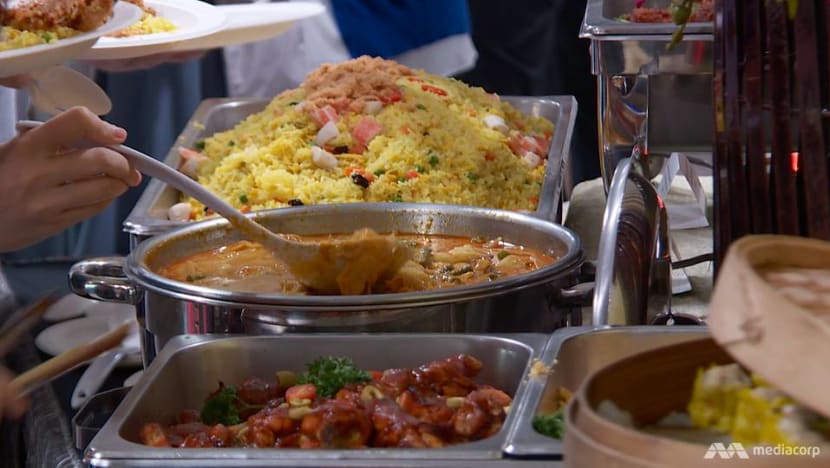
The “temperature danger zone” for cooked food is between 5°C and 60°C.
SINGAPORE: It is lunchtime at the Republic’s largest events caterer. But before the kitchen operations employees can eat, there is a daily pledge to take. It is a work safety pledge, and it includes food safety.
“I will ensure the safety of the food and uphold the quality of Neo Group. I will handle every task with integrity,” they recite, among other things.
With the company’s two central kitchens able to feed some 60,000 people in a day, there is no understating the need to be conscious about the dangers that can lurk in food preparation.
For all caterers, big or small, the rules are stringent; for instance, caterers must not use the same utensils to handle raw and cooked food, nor should they handle food with their bare hands. They must also timestamp catered meals.
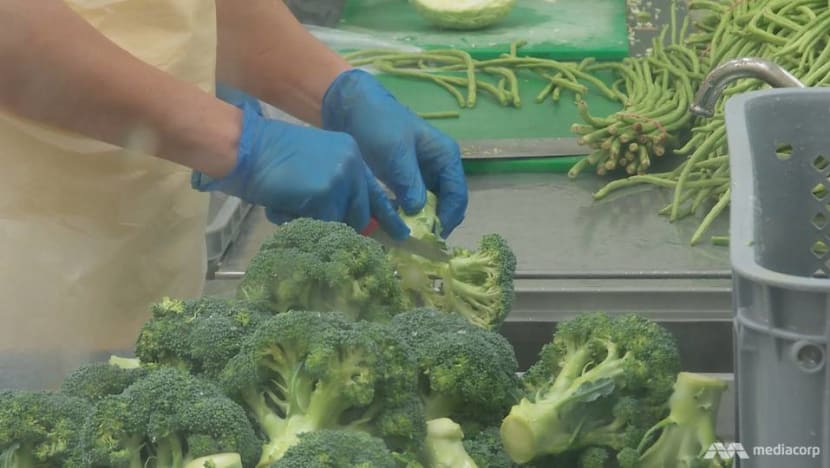
Caterers can get their licence suspended if they commit such hygiene-related offences. But as the past two months have shown, lapses and mass food poisoning still occur.
Over 700 people fell ill, 61 were hospitalised and one man died in outbreaks involving four food operators, including Spize, Tung Lok and Mandarin Orchard Hotel. The death of 38-year-old Fadli Salleh was the fourth such tragedy in a decade.
READ: No links found between food poisoning cases at Mandarin Orchard, FoodTalks, Tung Lok and Spize
READ: Food poisoning: Can you really avoid it?
So, ahead of the Chinese New Year festivities, the programme Talking Point finds out what goes on behind the scenes of catering kitchens, from the food preparations to the deliveries, and what gaps in processes could lead to contamination.

RED FOR RAW MEAT, YELLOW FOR COOKED FOOD
Talking Point wrote to several companies, but only Neo Group – Singapore’s only publicly listed caterer – allowed host Steven Chia inside to work as an assistant for two days.
And one of the first things he learnt was the need for health and hygiene checks on his temperature and fingernails before work began.
There are various standard operating procedures; for example, chopping boards have different colours for different purposes, like red for raw meat and yellow for cooked food, to prevent cross-contamination.
There are also different preparation rooms for different foods, such as one for meat and another for vegetables.
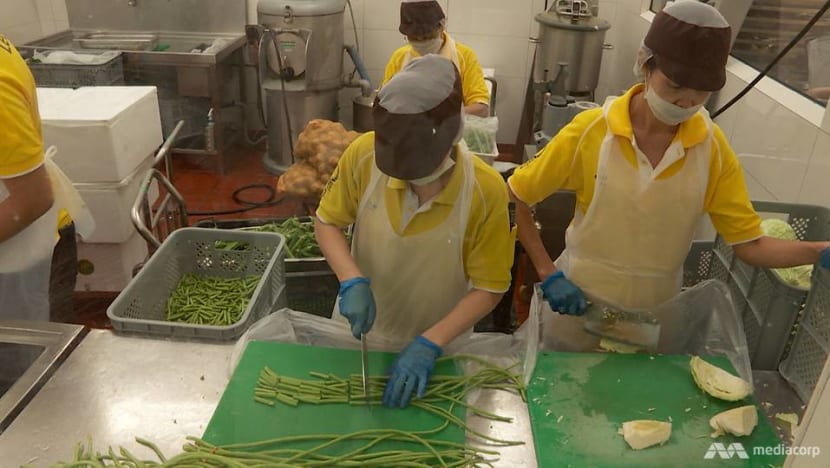
As the staff have different stations to take care of each day, they wear different caps, “so that we can recognise which department they’re from”, explained Neo Group operations manager Tris Thio.
And if they are in the wrong room, they can be caught on closed-circuit television cameras. “You’d have to write a report on why you’ve done it and how to ensure that you won’t do it again,” said Ms Thio.
Of course we’d send the operator for counselling – he’d just have to go through the whole hygiene process again.
As mistakes can be difficult to avoid, especially during peak periods, several processes have been automated.
For example, every station has a computerised kiosk, a screen that tells the chefs when to prepare a dish, what time it must be ready and the number of pax the event is for, cited Ms Thio.
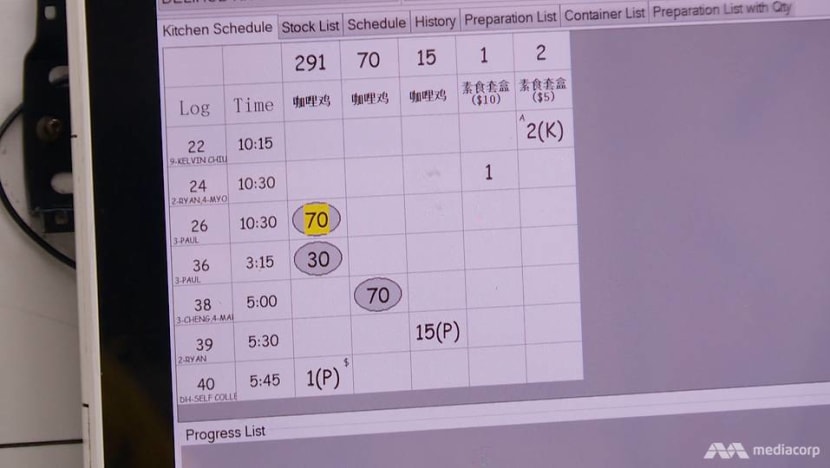
“We used to have log sheets … but it was quite messy,” she added.
“We’d fill in the wrong timing – or in the wrong slots – (and) the wrong batches as well. So with this (kiosk), just with a touch, we’d record the time that they finish preparing the food.”
The timings are important because caterers are required to inform consumers of the recommended “consume by” time, set at four hours from the time a cooked dish is placed in the “temperature danger zone” of between 5°C and 60°C.
This is why, at Neo Group, each dish is cooked by a different chef. It ensures that the dishes come out at the same time, besides preventing cross-contamination.
After cooking, a sample of each dish is kept so that it can be sent for lab tests in case of food poisoning.

Then the last leg of the catering process is delivery, which Mr Chia said “can be more unpredictable than (being) in the kitchen”.
“You’ve got bad weather, bad traffic – anything can happen. And even after the food has been delivered safely, you can’t really control what happens next,” he said after delivering orders.
DISHES ‘JUST SITTING THERE’
According to Neo Group’s Jessie Ong, who has been in the business for over a decade, ensuring food safety is “more complex” for a caterer than for a restaurant, owing to the size of the orders.
“We have a lot more layers when it comes to delivering food to our customers,” said the assistant director of marketing and business development.
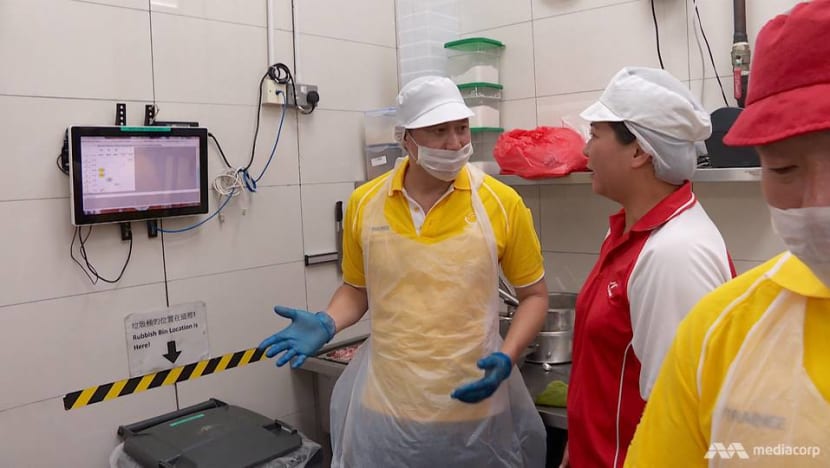
Her company also has resources to spend, such as on its automation processes to reduce human error. For example, just the hardware for its kiosk system cost about S$100,000.
Some caterers, however, may struggle more with resource constraints, as Ms Lily Lim had seen when she was working in food and beverage establishments for over 13 years. These ranged from caterers with fewer than 20 employees to large hotels.
Now a home caterer, she said Neo Group’s “one chef, one dish” policy was “not really” common because of the manpower involved.
I’ve witnessed, especially during the festive season, because they were so jam-packed with orders and everything needed to be rushed out … dishes (for lunch) were already ready by 8am or 10am and just sitting there.
She was surprised at the recent string of food poisoning cases involving big, reputable companies, but at the same time she said: “When you have a company (with) a lot of employees … you need to keep a really tight ship.”

Usually, caterers struggle a bit when they are busy, agreed Mr Mohd Kalil, who does business development for Eatz Catering, whose kitchen can handle up to 30 orders a day.
His is one of 13 catering companies at Gourmet East Kitchen, which is a six-storey industrial complex in Bedok, one of many food zoned factories across Singapore where these small to mid-range companies are situated.
Asked if the kitchen staff have only one role each day, Eatz Group general manager Mani Kandan replied that it depended on the order. So sometimes the chefs have to prepare their own ingredients.
Addressing the potential issue of cross-contamination, Mr Kalil said: “The chefs are well-trained. They went for the food hygiene course.”
Added Mr Mani: “We’d train our chefs very seriously.”
Ms Lim believes that companies take more orders than they can handle during the festive period, however, which means hiring additional staff. And she doubts if even half of them have a food hygiene certificate.
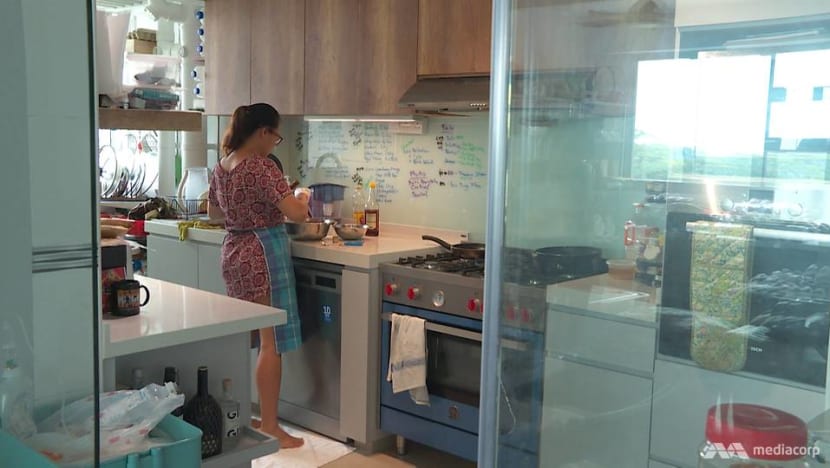
“Manpower is such an issue in the food business,” she said. “If you get someone knocking on the door, (it’s) like, ‘Yay, I welcome you with open arms.’”
A CAUTIONARY TALE FOR CATERERS
In the case of Spize’s River Valley outlet, an investigation by the National Environment Agency, the Agri-Food and Veterinary Authority and the Health Ministry found that seven of the 35 food handlers were unregistered, and detected six types of pathogens.
READ: Salmonella behind Spize mass food poisoning incident; outlet to be shut
“Probably because they weren’t certified … they didn’t really know how to handle food in a hygienic way,” said Nanyang Polytechnic’s School of Chemical and Life Sciences deputy director Richard Khaw.

An expert on food safety and microbiology, he analysed what could have gone on in the Spize kitchen for its catered bento boxes to have caused 47 people to be hospitalised, including Mr Fadli, who died after eight days.
On how salmonella, a micro-organism found in contaminated raw or undercooked food, could have got on the raw chicken samples, he said infected chickens may not show any symptoms, but cooking them thoroughly would have killed the bacteria.
Salmonella, unlike mould and yeast, is undetectable to the eye. And it could have got on Spize’s belacan egg fried rice through cross-contamination if, for example, the raw and cooked food were not kept separate during the preparation, he explained.
There were also faecal coliforms – bacteria found in human and animal faeces – on the knives and chopping boards. These could have come from raw vegetables irrigated with water that contained faecal contaminants, said Mr Khaw.

The food handlers may also have had poor hygiene practices, “for example going to the washroom and not washing their hands properly”. He added: “Then they’d contaminate all the chopping boards, the knives or even the surfaces.”
The NEA’s previous inspection of the Spize outlet, in October, found only one fault: The restaurant did not have enough rubbish bin covers. Its hygiene grade, along with that for Tung Lok Catering and Mandarin Orchard, was an A.
These are “snapshot” gradings, however, and “the truth is that the NEA can’t be there 24/7”, said NEA deputy director-general of environmental public health Chew Ming Fai in reply to the question of how effective these checks are.
“The onus is on the operators themselves to make sure that the proper staff are trained, that they have audit systems in place and that these processes are adhered to,” he added.
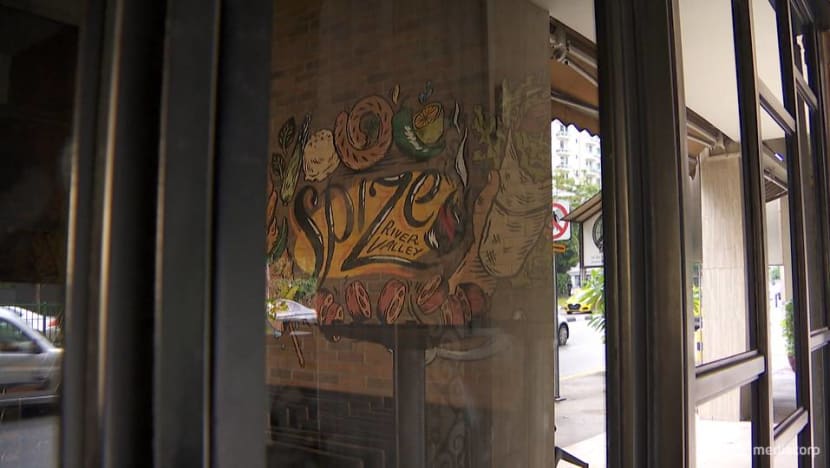
More than 2,400 checks on caterers were conducted last year, with establishments getting inspected at least twice a year. And in 2020, the NEA will have a gold, silver and bronze regime, which will look at the premises’ track record.
READ: Stiffer fines among tougher penalties introduced for food poisoning cases: NEA, AVA
Currently, the agency also has a Food Hygiene Officer scheme, in which the larger premises are required to have an on-site officer who is trained to conduct hygiene audits.
As to whether such audits would be lax, Mr Chew pointed to what would be in the operators’ interests.
“The business impact and loss of reputation if you’re suspended are additional impacts that the caterer himself, beyond whatever the government can impose as penalties, has to bear,” he said.
Watch this episode of Talking Point here. New episodes on Channel 5 every Thursday at 9.30pm.


















